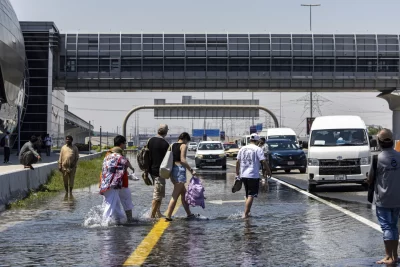
ALONG RIVER RWIZI, Uganda — Along a stretch of bush by a muddy river, laborers dug and slashed in search of bamboo plants buried under dense grass. Here and there a few plants had sprouted tall, but most of the bamboo seedlings planted more than a year ago never grew.
Now, environment protection officers seeking to restore a 3-kilometer (1.8-mile) stretch of the river’s degraded banks were aiming to plant new bamboo seedlings, clear room for last year’s survivors to grow and look after them better than they did the first time.
A successful bamboo forest by the river Rwizi — the most important in a large part of western Uganda that includes the major city of Mbarara — would create a buffer zone against sand miners, subsistence farmers and others whose activities have long threatened the river. The National Environment Management Authority estimates that the Rwizi has lost 60% of its water catchment area over the decades, and in some areas this winding river runs as narrow as a stream.
“Once bamboo is established, it is almost like a net,” said Jeconious Musingwire, an environment officer who was the project’s technical advisor. “The roots trap everything, including the surface runoff, and stabilize the weaknesses of the banks.”
This East African country is seeing growing interest in bamboo, a perennial plant cultivated in many parts of the world. It can be burned for fuel in rural communities, taking pressure off dwindling forest reserves of eucalyptus and other natural resources. It’s a hardy plant that can grow almost anywhere. And businesses can turn it into products ranging from furniture to toothpicks.
Some of the bamboo species grown in Uganda are imported from Asia, but many — like one whose shoots are smoked and then boiled to make a popular traditional meal in eastern Uganda — grow wild.







